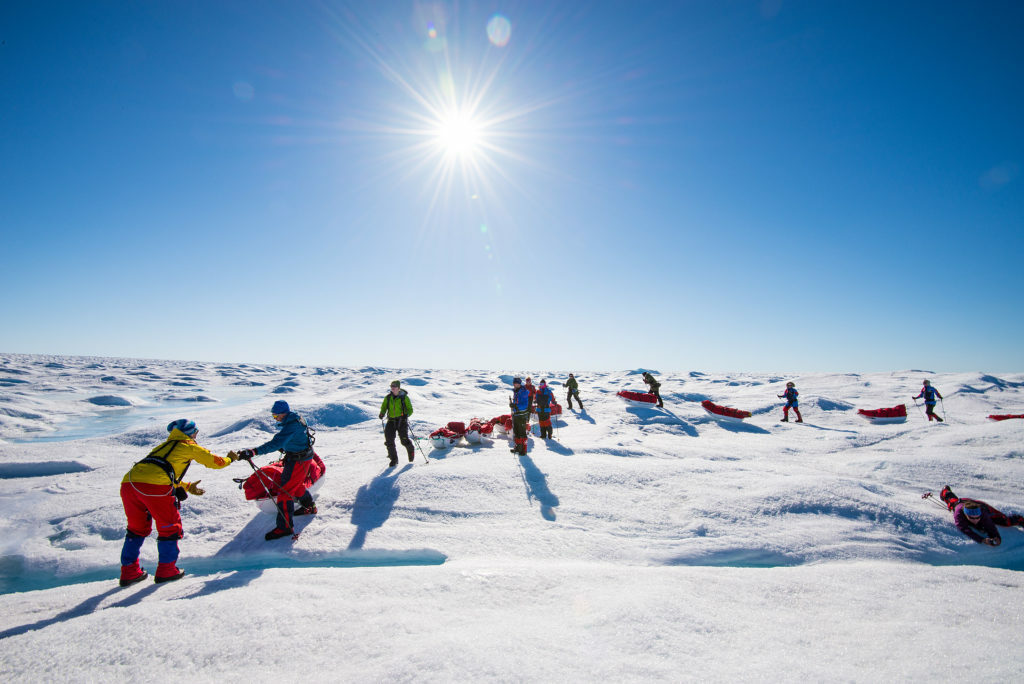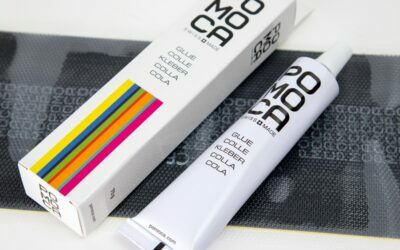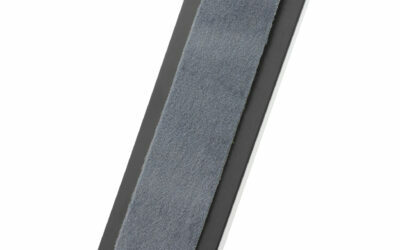Training – why is it so important?
When people begin a planned expedition and discover they’re not as fit as they could be, it can be a real issue. Generally speaking, there’s no such thing as being in “too-good shape” for a long tour. The better your condition, the better the experience. You really want to be as fit as possible before you set off.
Before you go on a longer tour, whether it’s a Greenland crossing, into the high mountains, or a cabin tour of deepest Finnmark, preparation’s everything. There’s equipment, general information about the tour itself to think about, not to mention logistics, which can be quite extensive. And last but not least there’s training.
According to several of our panel of experts, training’s often given lower priority. Maybe we blame the fact we don’t have enough time; maybe we focus on equipment and technical details at the expense of the physical aspect. Some put off training for so long that, in the end, it just gets too late, no matter how much last-minute effort they put in place.
We could be heroes
To clarify, obviously this doesn’t apply to everyone. Some people put preposterous hours and effort into training. It’s often the case that tour leaders have to call on those who’ve trained well to take a little more than their share of the load to make up the slack of other’s lack of physical preparation. These tend to be people who’re willing to do it without dropping a beat, fortunately. And, equally fortunately, there are quite a few heroes like this!
Everyone’s different
It’s also important to note that everyone has their own capacity. There’s a big difference between a sprightly 25-year-old and a grizzled 60-year-old. In recovery time especially. There are still, however, a number who take training preparations far too lightly in general.
Priorities and commitment
The argument that you don’t have time doesn’t really wash, to be honest. You probably shouldn’t go on demanding expeditions if you don’t. If you don’t have time to train, strictly speaking, you don’t have time for the expedition part.
This is something you should be absolutely sure of when you commit to participating in, say, the Åsnes Expedition Amundsen, a guided tour party or a trip across the fjord with friends. It’s about prioritising what you commit to, out of respect for yourself and everyone else involved. This is something you have to be sure of right from the start. Do I really have time for this??
Be team player
It’s worth remembering that our decision to join an expedition or a tougher tour party affects many more than just ourselves. Be a little methodical. Get an overview and a plan. If you “don’t have time” then you have to make time. It’s a question of priorities. You’ll probably have to give something up. You’re going to be training instead. If that’s impossible, then the expedition will have to wait. Make time when can you make time.
Focus
We’ve written about priorities above. But there’s also a hierarchy of priorities. We don’t always get this right. If you’re about to embark on a tour tough enough for training to be essential, you’re likely to be somewhat gear-focused. It’s just the way it goes.
We often focus too much on having the best, or the most appropriate, equipment. And our experience suggests that, on this front, most people do pretty great – gear’s never really an issue.
What will get you over the Greenland ice cap is hard work: muscle and calories. But gear anxiety is real. It’s bad enough choosing new skis for the hills behind your house. Suddenly we’re afraid that our brand new skis might not be good enough to complete the trip. Analysis gets over-forensic. Have we got the right model? The right length? The right width? People lose sleep over this (it’s OK – no on’s immune).
But people don’t get this meticulous about exercise. When it comes to equipment, it’s pretty straightforward. There’s often, even, a very detailed equipment list of what you absolutely need to get from A to B. These are thing you need; you’ll be fines.
Mental preparations
When we talk about equipment, we talk about tangible things: packing lists and material requirements. But we’re not, perhaps, so good at imagining the sum weight of these things on a long tour on skis. Unless you’ve done it before, it’s almost impossible to understand how demanding this can be. Indeed, very few of us will ever have done anything remotely similar.
It’s not a bad tactic to present the tour as heavier than it actually is. A little fear installed with good intentions seems to be pretty productive. It’s prferable that people should be pleasantly surprised than they should hit the wall on day 4 of 27. This is hugely important for the feeling of mastery, and it lays the foundation for what you think you can complain about early in the trip.
If we go in with the attitude that the trip’s going to be more arduous than it actually is, or at least that we’re going to have to be prepared to handle full storm conditions, then there’s a greater likelihood that we’ll put in the necessary effort in training and preparation – especially mentally..
Why train?
The most important benefits of being in good shape aren’t complicated. First, you have something left in the tank when you make camp. It’s easier to be positive, to keep up your spirits, to keep up the spirits of others, if you’re actually alive. You are somewhere extraordinary. You can notice it; experience it; enjoy it. To put it another way, the more you train, the more you’ll enjoy the experience.
Our best tip is, therefore, to get set up for tyre training and get going! Look for a tyre training group near you. People meet, socialise, and train together. You don’t just get fit; you can actually make new friends, find your significant other, or just meet people as interesting as you. Anyway. Don’t put off your training!
Other productive forms of exercise
Bring your friends. You’re sure to find someone to support you. You should probably start your training a year before a Greenland crossing. Then you can travel to a training session and evaluation without being afraid of your fitness and strength. You can simply enjoy the experience. The excitement of the expedition won’t be diminished by the fact you’re ready for it. On the contrary – it’s there to be enjoyed!
Admittedly, we’ve been a bit strict here and there. But we want you to enjoy your tour. We wish the best possible experience, luck, pleasure, and the rewards of completing it. If you choose to follow our advice, we’re very sure the entire experience will be hugely more memorable for the right reasons. God tur!
Tyre training
Tyre training is a fantastic form of training and an excellent way to prepare for the upcoming ski season. If you’re training for an expedition, you’ll want to bite the bullet and drag a tyre.
We show how to make your own set of tyres for the off-season. This is gear that really doesn’t have to be expensive. If you already have a harness and some cord, you’re well on your way.
If you don’t have tyres lying around, they’re not difficult to get hold of at all.


Tips for taking a dog into the wilds
Positive training and positive experiences in the outdoors make for a confident dog. But setting out in winter is something a little different – especially if you’re overnighting. So we’ve put together some good rules, tips and tricks to make the experience the best it can be. There’s nothing to prevent these tips being applied in your everyday life with your dog, either!

Storing skis until next season
Putting your skis to bed for the summer, clean and protected, is a chore, but it’s got to be done. It’s more than worth it. Here we break down the basics. Your skis will thank you. Actually, you’ll thank yourself come the first snow – for all sorts of reasons…

Replacing and renewing glue on skins
Unfortunately, skin glue doesn’t last forever. The skin itself, on the other hand, only gets better and better until it wears out. So if you replace the old glue, your skins can last many years. Moribund glue can be replaced, either with tape or sheets, or from a tube. We explain how.

Tailoring long skins for alpine touring
Wondering how to tailor your skins for alpine touring? Here’s an overview – care and trimming long skins for touring skis.

How to use Åsnes short skins
Wondering how to use Åsnes short skins? Not sure what these skins are good for and what the point is? Or wondering how to install a short skin? How to customize them? Whatever it is, here are the answers.

Which cross-country skis? And how long?
Choosing new cross-country BC skis is can be bewildering. We compare length, width, profile. We weigh ourselves and check again. We ask advice on forums. We change our minds repeatedly. So before you pull the trigger, set your mind at rest by reading this overview. If you’re still unsure, you can talk to the expert in your local specialist shop or contact Åsnes’s customer service – we answer questions the whole time and we can usually help!